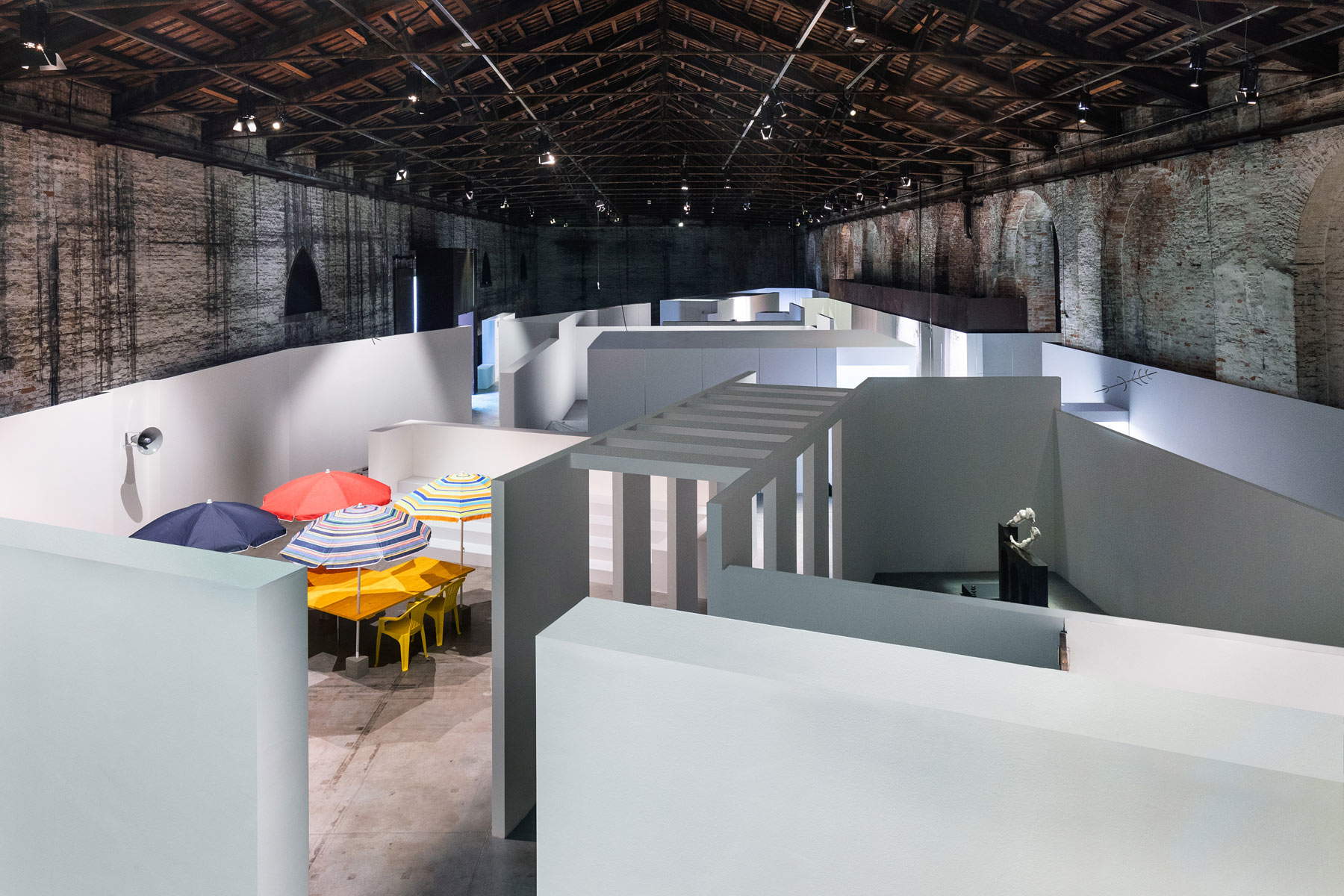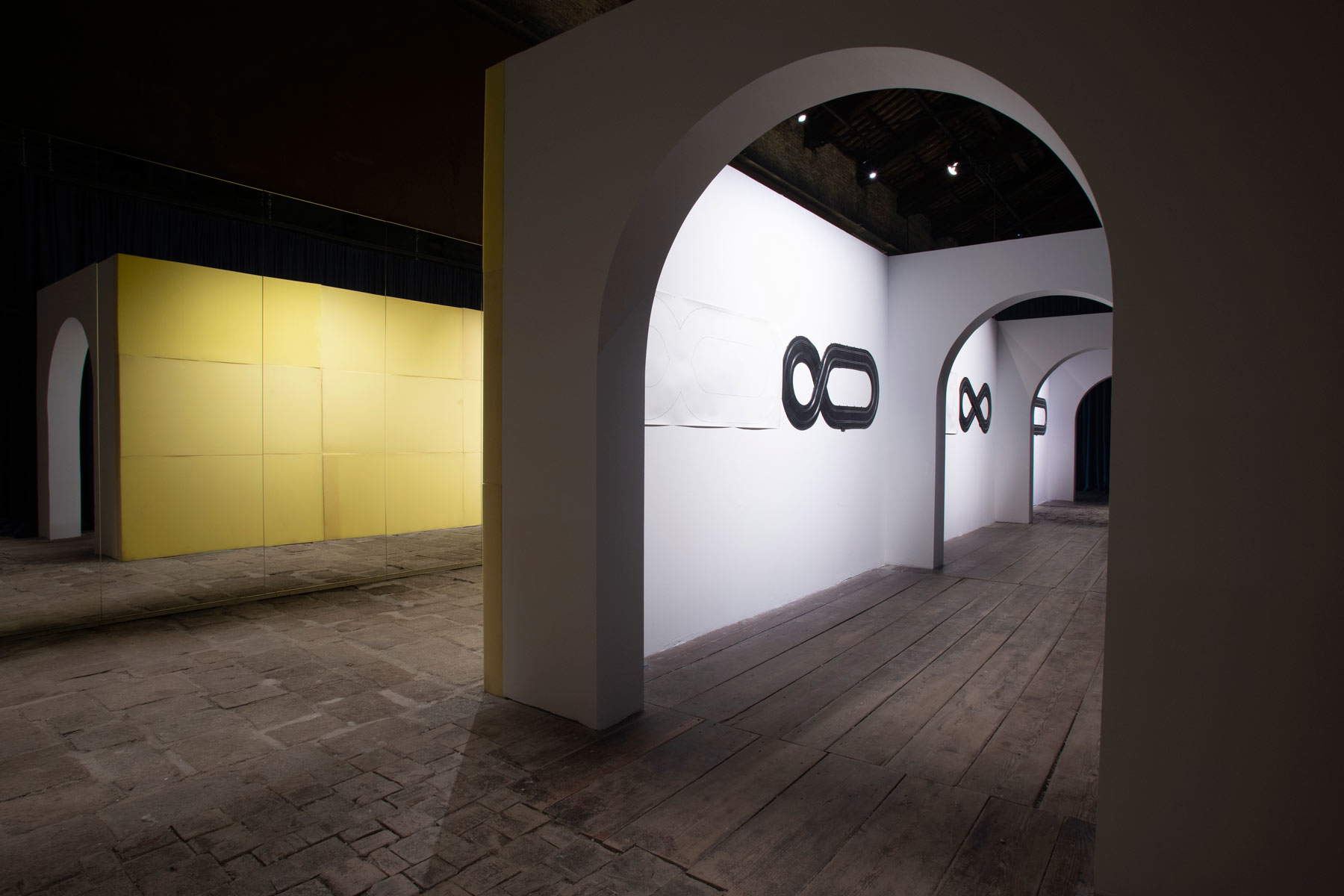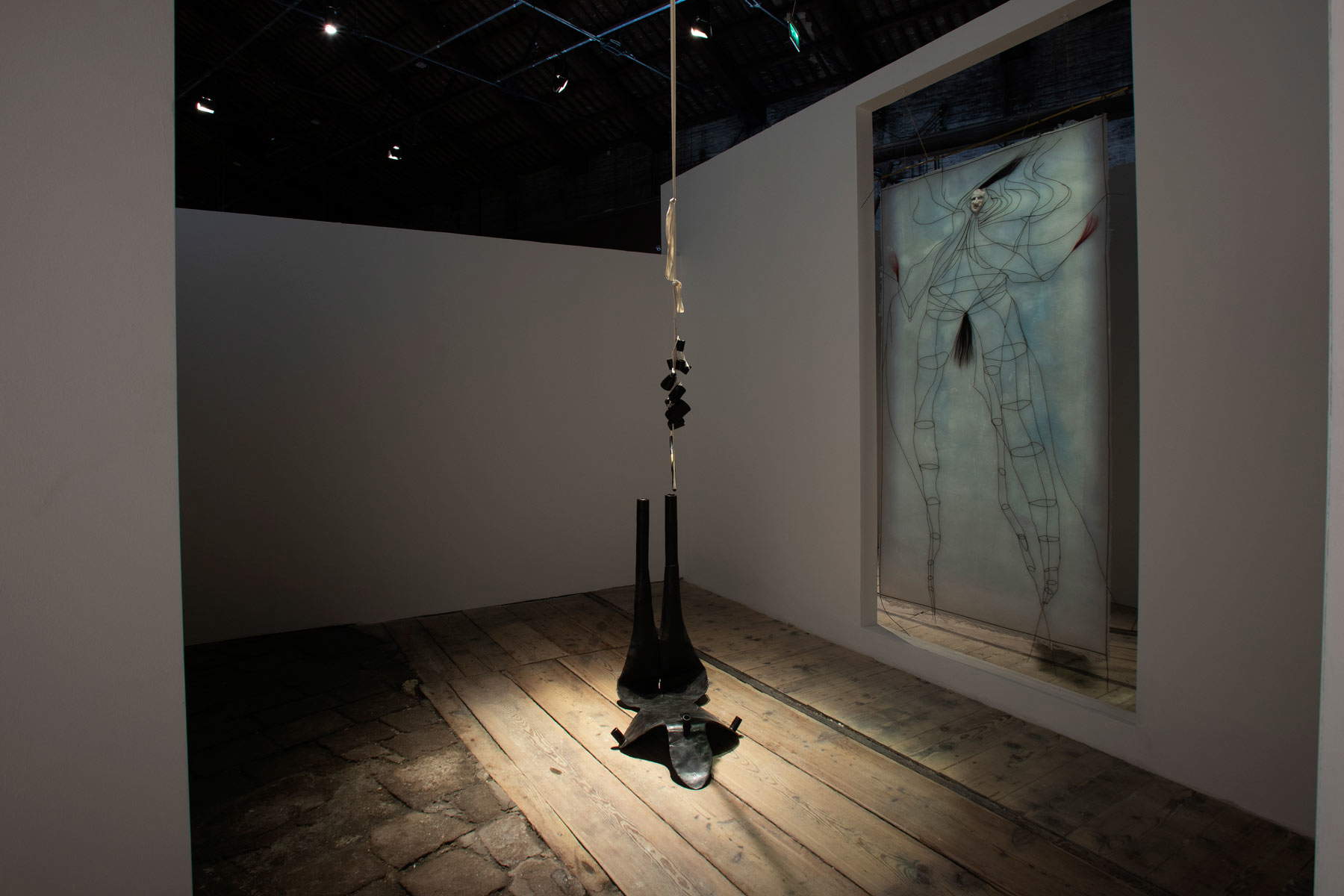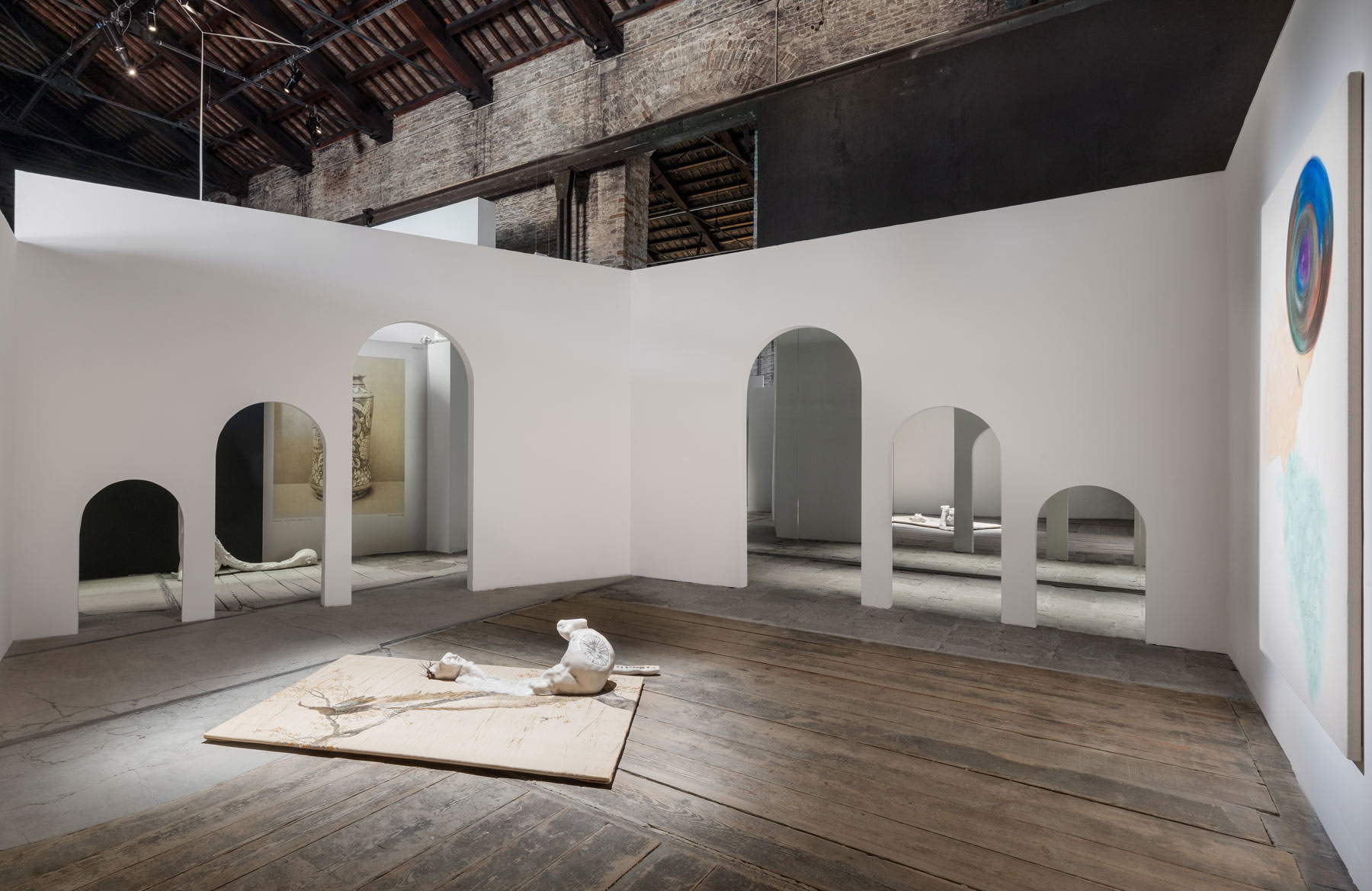Biennale, the Italian Pavilion is weak and superficial, and the real artist is the curator
The multifarious conglomeration of articles, short articles, editorials, reviews, elzeviri, and rinses of communiqués that have been accompanying the Italian Pavilion ’s exhibition(Neither Other Nor This. The Challenge to the Labyrinth) at the Venice Biennale since May, never ceases to remind us that its curator Milovan Farronato has inconvenienced Calvino, Borges and Kierkegaard to justify the layout of the “labyrinth” that will welcome visitors to the Venetian exhibition until November. What most fail to write, however, is that it is not enough to cite three illustrious personalities from the recent past to give a semblance of legitimacy to an exhibition. In fact, there is a detail, increasingly neglected, which many curators, critics and journalists seem too often to have forgotten: that is, the network of “quotations” (to use a term evidently very dear to several colleagues) should give rise to a solid structure, capable of holding up an exhibition of contemporary art in order to offer a profound reading, and as clear as possible, of the starting problem. The first limitation of Neither Other Nor This lies in the fact that, perhaps, the starting problem is not clear even to the curator.
A lack that nevertheless unites Farronato with thatItalo Calvino whom the exhibition ascribes to his tutelary deity, his conceptual guide: Already in the sixth issue of Menabò, that is, the one that immediately followed the issue in which Calvino’s La sfida al labirinto (The Challenge to the Labyrinth ) was published, from which the curator of the Italian Pavilion started, Angelo Guglielmi, pointing out the shortcomings of the Ligurian writer’s essay, wrote that perhaps even he himself did not have a firm idea of what the “challenge to the labyrinth” was, also by virtue of the fact that Calvino mentioned it fleetingly only in the closing lines of his long essay. Guglielmi tried to propose his exegesis: “simply put, the literature of the challenge to the labyrinth would consist of a literature that does not renounce making moral judgments and whose discourse is such that it directly affects the history of men.” The young militant critic reproached Calvino (moreover, it would be interesting to know why, out of all the available literature on the labyrinth, he opted for an essay by a writer whose moralism does not fit well with Farronato’s curatorial history) for the fact that his desire to arrive at a literature of the challenge to the labyrinth remained confined to the pure plane of the intention, incapable of finding a concrete realization since he lacked the “historical and cultural premises on the basis of which he could conceivably conceive of such an intention.” And lacking, according to Guglielmi, the premises for a literature of defiance to the labyrinth, Calvino, by implication, accepted that “literature of the labyrinth” which he himself rejected: thus, the discussion shifted to the level ofliterature’s commitment. It will be worth noting that, according to Guglielmi, the idea of a literature with useful content was at the time unattainable and that, indeed, his wish was that the yielding to a disengaged literature would become a “conscious and reasoned choice.” a debate ensued that went on for some time and in which several protagonists of the culture of the early 1960s took part, including Edoardo Sanguineti, who already a decade earlier, in his Laborintus, used the metaphor of the palus putredinis to refer to the contemporary world (and, needless to say, there is no trace of Sanguineti in the texts that are supposed to support the exhibition).
 |
| Image from the exhibition Neither Other Nor This. The challenge to the labyrinth. Ph. Credit Delfino Sisto Legnani and Marco Cappelletti. Courtesy DGAAP-MiBAC |
 |
| Image from the exhibition Neither Other Nor This. The challenge to the labyrinth. Ph. Credit Italo Rondinella. Courtesy La Biennale. |
 |
| Image from the exhibition Neither Other Nor This. The challenge to the labyrinth. Ph. Credit Italo Rondinella. Courtesy La Biennale. |
 |
| Image from the exhibition Neither Other Nor This. The challenge to the labyrinth. Ph. Credit Delfino Sisto Legnani and Marco Cappelletti. Courtesy DGAAP-MiBAC |
 |
| Milovan Farronato. Ph. Credit Italo Rondinella. Courtesy La Biennale. |
Here: it would surely have been more interesting if Neither Other Nor This had conducted a reflection on the consequences, developments and criticalities of Calvino’s essay, instead of producing a superficial, scholastic (in content and form) reading of it, resting on a few basic assumptions, with connections that, to be generous, seem to be linked by parataxis (in 523 pages of the catalog, the only passage, of just a few lines, in which Kierkegaard is quoted, which should also be one of the philosophical bases of the review given that it provided inspiration for the title, is the one in which it is stated that the expression Neither other nor this is intended to recall the two stages of existence defined in Aut Aut: how this relates to Calvino’s Labyrinth, however, is unknown, since Farronato does not explain it). The curator seems to have confined himself to classifying the works of the three protagonists of the Italian Pavilion(Liliana Moro, Enrico David and Chiara Fumai) along the two lines that Calvino identified in the avant-garde, the visceral and the rationalist (although it is not clear what Farronato means by “visceral” and “rationalist” in his exhibition: the approach to the “labyrinth” by the three artists? their attitude towards art, culture, reality, chaos? their commitment?). This at least would seem to be his main concern in the opening essay: what is missing, however, is an underlying theoretical basis. And, of course, one does not need to have a profound knowledge of Calvino and the Italian literary scene of the 1960s to realize this: the frivolity of this Italian Pavilion emerges with crystal clarity if one tries to understand what is behind the works, behind the set-up.
In order to order an exhibition that works, it is not enough just to list a series of clichés about labyrinths (including the one that, to quote verbatim, “in Rome [.] in the 17th century elaborate facades were erected and grandiose passageways were opened preceded by narrow paths so as to achieve, by contrast, a welcome and pleasant ’surprise effect’.” much to the chagrin of all those men of the seventeenth century, from Virgilio Spada to Carlo Fontana, who posed the problem of demolishing, even then, the Spina di Borgo, and much to the chagrin of architectural historians who tell us how things were): there must be well-structured assumptions (this at least if one wants to legitimize it on a philosophical level). Assumptions of which Neither other nor this one, however, is devoid: no reasoning, keys to interpretation, strong proposals emerge. There is no discussion of Calvin: there is simply a reprise. And what the visitor is left with is a set of works neatly arranged within impeccable panels arranged to resemble the shape of a labyrinth.
Of the labyrinth, then, there is only the sense of emptiness (but this, perhaps, is a plus, since the disorientation is sincere): it may be because it seems like a stretch to want to bring together different objects, by three different artists, made in different periods, providing them with a frame (or something resembling it) elaborated for a specific occasion; it may be because such a sluggish exhibition has little to affirm; it may be because the works seem to have worked for the curator and not vice versa (so much so that most people’s comments focused on the container rather than the content, as after all was natural: such a scenic proposal to act as a backdrop to works that, given the weakness of the project, played the role of extras rather than protagonists, could not have led to a very different outcome). And the end result is that the best artist in the Italian Pavilion is definitely Milovan Farronato. Paradoxically, in what seems to be one of the worst flaws of the project, it is possible to find the most interesting merit of the exhibition: because, if nothing else, it offers an opportunity to reason about the transformations that the role of the contemporary art curator has undergone in recent years (although artists/curators have been talked about for a long time). But this idea is probably beyond the scope of the exhibition.
Calvino argued that the devil today is the approximate. It is therefore interesting to see how the labyrinth has been simplified in the corridors of the Italian Pavilion, where political reflections (assuming there really are any) are reduced to metaphors lacking in force and incapable of being incisive, where no one dares to speak of “avant-garde,” despite the centrality of the topic in the ’62 Challenge to the Labyrinth (in the catalog, the word “avant-garde” appears sixteen times: fifteen in Calvino’s essay republished for the occasion, and one in the hat that introduces it, because it is mentioned in the title of Guglielmi’sAvant-Garde and Experimentalism ), where the determinacy of Menabò ’s writing is lost in aphasic rivulets made up of major arcana papers, worn umbrellas, empty quotation marks, improbable constructions, essays of tedious, self-referential and predictable creative writing that have nothing to say. At best, they end up composing a divertissement with no pretense of longevity, an upscale furniture store, a storefront with a lofty and rhetorical sign. But this is not what one would expect from the Italian Pavilion.
Warning: the translation into English of the original Italian article was created using automatic tools. We undertake to review all articles, but we do not guarantee the total absence of inaccuracies in the translation due to the program. You can find the original by clicking on the ITA button. If you find any mistake,please contact us.





























